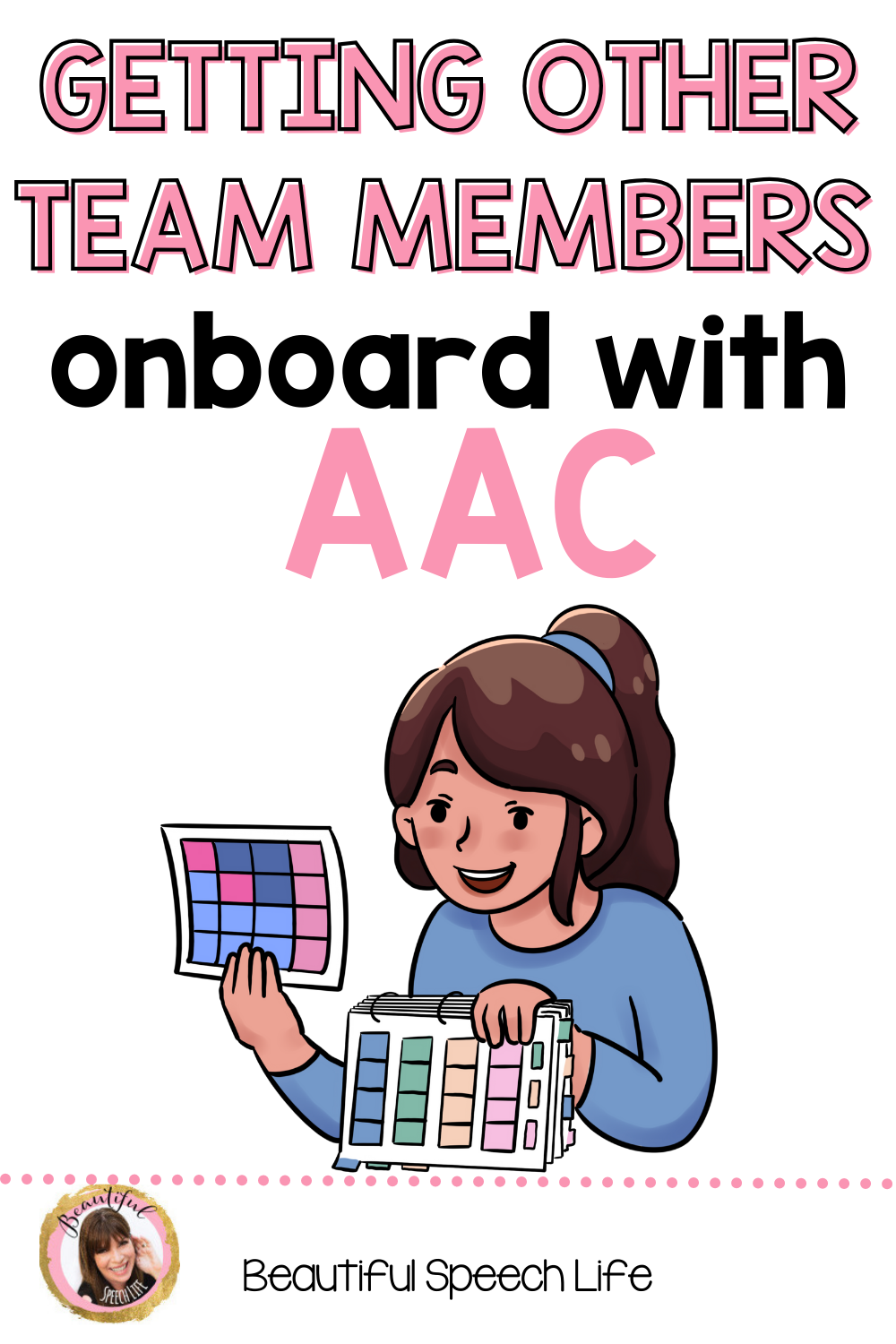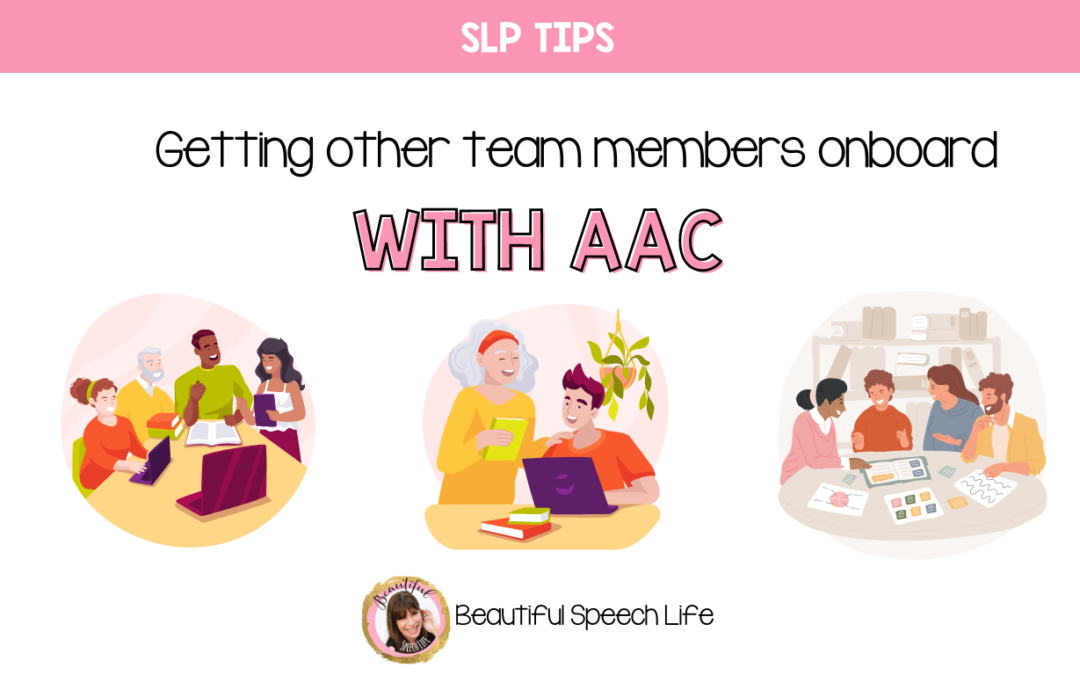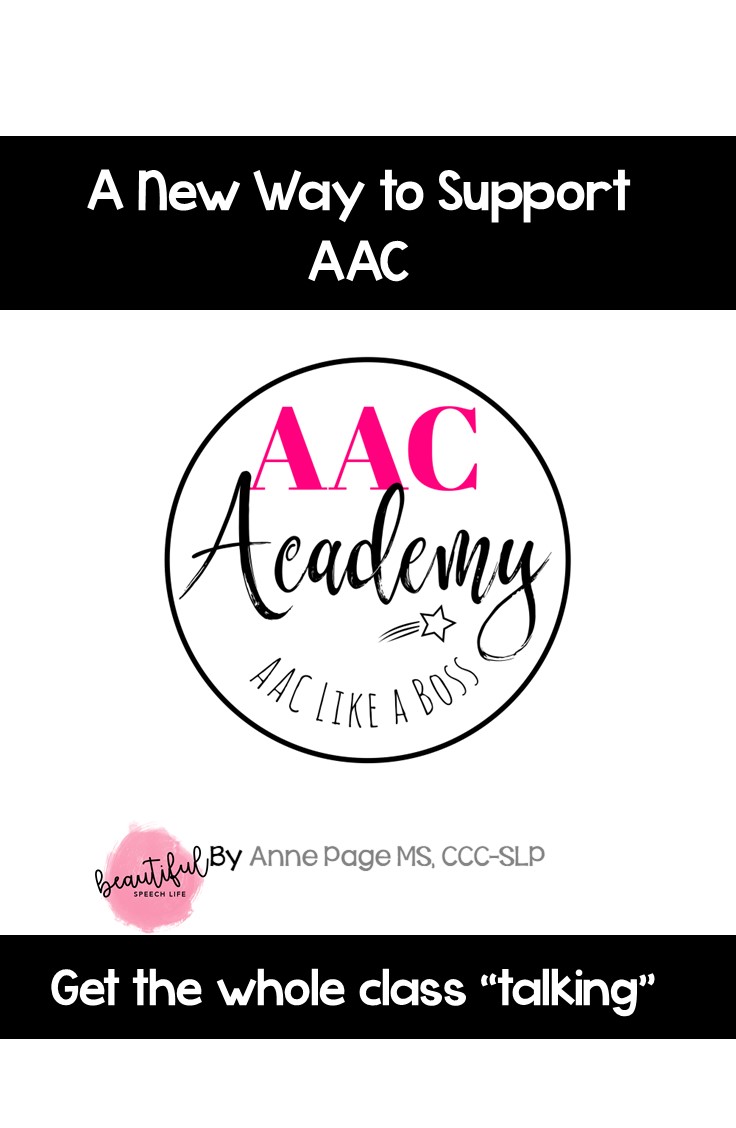We can do fantastic work with our students using AAC but as I’m sure you know AAC is something that has much more impact if it is happening everyday. Which means we need to get colleagues at the school onboard with supporting students with their devices and other resources. But getting other team members onboard with AAC can be challenging.
But if your school is anything like the ones I work with this can be tough. We all know how busy teachers are and asking them to do something extra can be hard. But the rewards for our students make it so worthwhile.
It’s a slow process, so the more you can connect with other team members and build trust, the more they’ll be open to your suggestions. It’s not a one time thing showing them how a device works. Our student and often the staff are learning a new language.
The teachers are going to need support. If we can follow up, listen, collaborate, and create a shared vision, our AAC users will benefit. Set a goal. In 3 of the classrooms I work with we’ve recently set a goal to have devices out daily, modeling a core word or two every day during the daily routine of the teacher’s choice and setting aside time each day for the student to explore their device. You can get my support material for the classroom to help with this here.
Encourage them to keep it simple when they are just getting started with a student with AAC. If they can start by modeling when talking to a child and not worrying about selecting every word that’s a great place to start.
Something that’s been super successful in one school is AAC Club – I have all sorts of info about it on my Instagram. It all started with a student who had a device and was learning yoga. The student expressed an interest in leading yoga; however, nobody could understand her. So, we programmed some yoga poses into her device. Then, we brought in another student who uses a device and… another student… After a while it became a club. Students who use devices get together for 30 minutes a week and the physical therapist and I model different words and then the kids get to check out other kids’ devices. They love it!
Getting people used to seeing and using devices
Fear of the devices and worrying about messing up plays a part in the reluctance of others to use the devices. So we’re making sure that devices are seen in use in a fun way.
This isn’t just with the teachers in the school. We’ve gotten other staff involved with AAC Club., For Halloween one year, the kids took their devices and offered candy to the office staff. The office staff were able to respond on a device, which was a huge win! It was great to see the kids being able to interact with people outside of their classroom.
We are also working on the devices being used in the playground. Working with the physical therapist, we started taking the devices outside for recess, so people see them more. As people see the devices and get to know them better, you can make “gentle” suggestions, like “Why is their device over there on the shelf? It needs to be right here.”
Supporting teachers when they are struggling
Even with the most engaged teachers, they can struggle with AAC. Students using their devices when they should be listening is one of reasons I see teachers putting devices away. The problem with this is that the teacher is effectively silencing the student. If this is happening then can you support the teacher by teaching your students not to “talk” during certain times. You can also make sure that time is scheduled for your students to explore their devices daily.
Getting parents involved
I’ve had less success with parents. They often have so much they are trying to juggle and the device can feel like just one more thing to learn. I’ve led parent support groups and I offer to show them how to use the devices and how they can support their child at home. Unfortunately, very few people take me up on that. But I keep trying and I’ve some parents who are superstars at this! In the ideal situation, the child would have a parent modeling the device at home and then we would be modeling at school, and we would be communicating back and forth. Like, “he touched the ‘go’ when he wanted something to go, and that was incredible!”
You are nearly guaranteed you are going to get at least one teacher who is resistant. Keep persisting! I promise it’s worth it for your students. Don’t forget to listen to what staff and teachers know and think about AAC. This can be easy to do with our enthusiasm as SLPs!
Looking to find out more about AAC? Learn more about my experiences with AAC in my interview with WIDA.
Pin to read later:



 Hey there I’m Anne Page. I help heart centered SLPs and educators put the fun in functional communication.
Hey there I’m Anne Page. I help heart centered SLPs and educators put the fun in functional communication. 